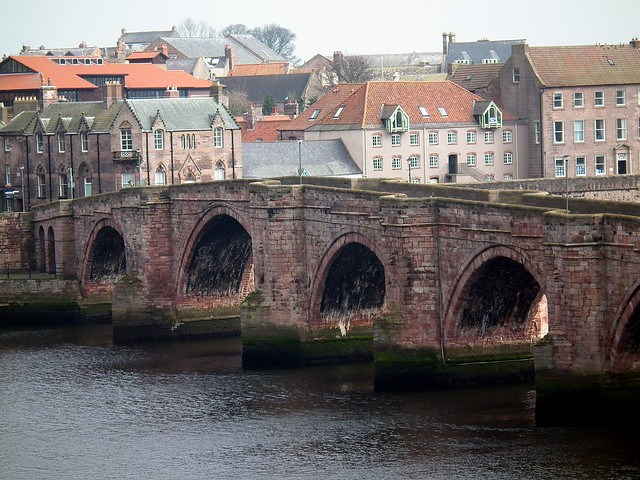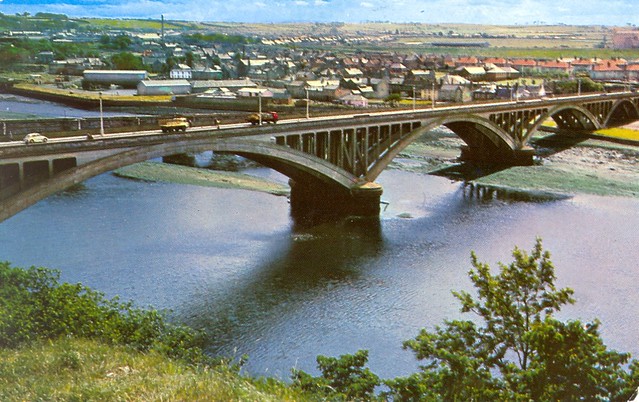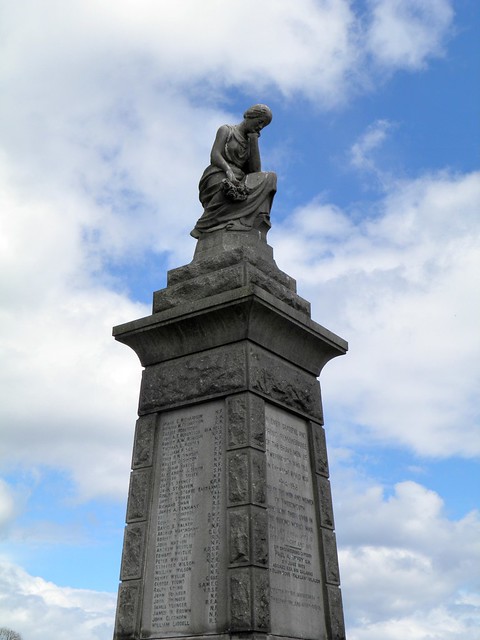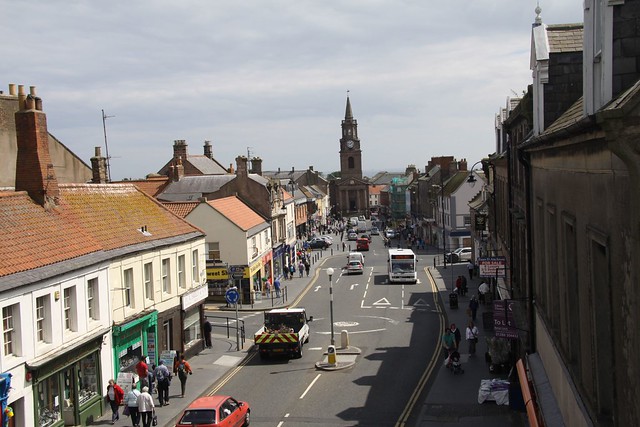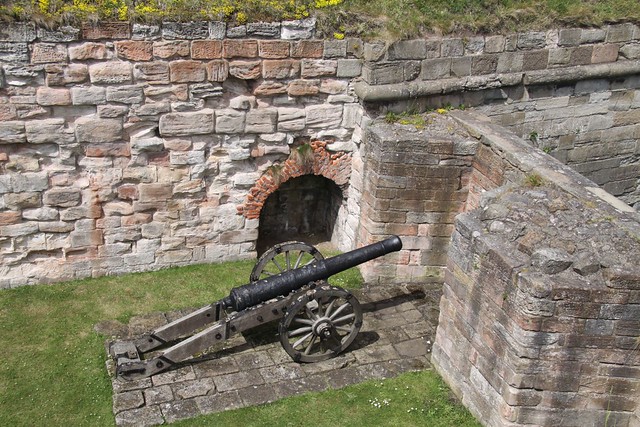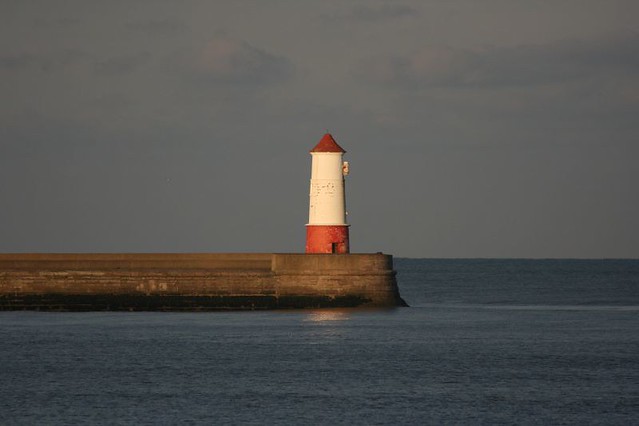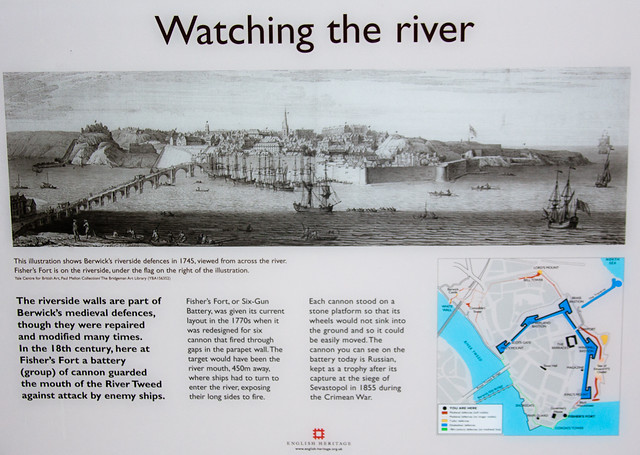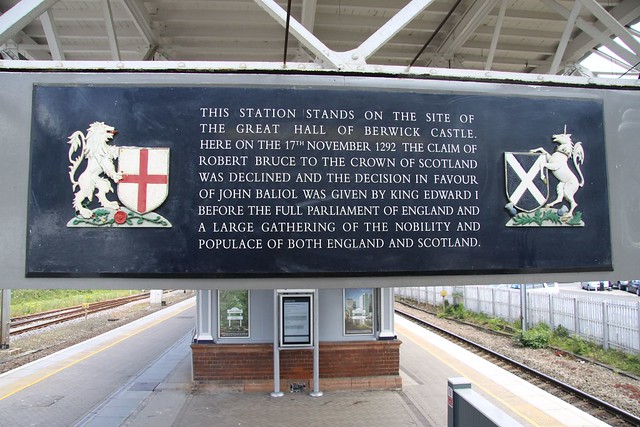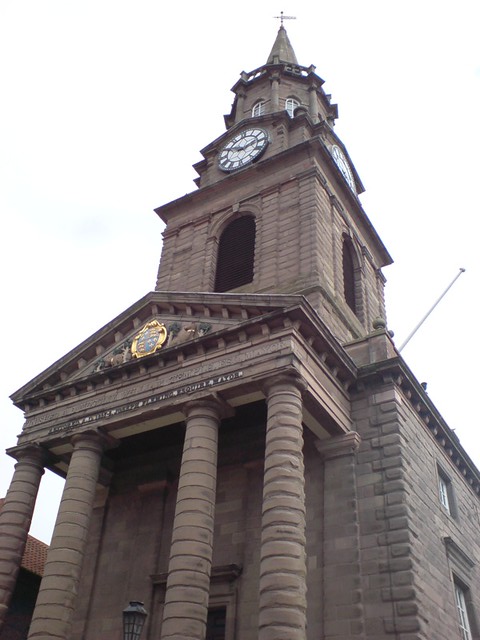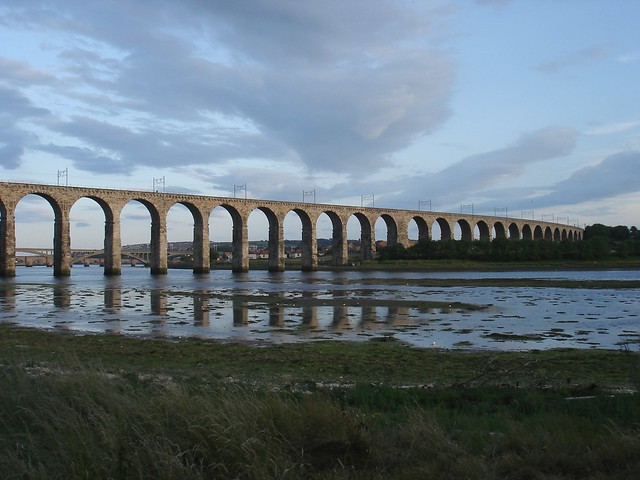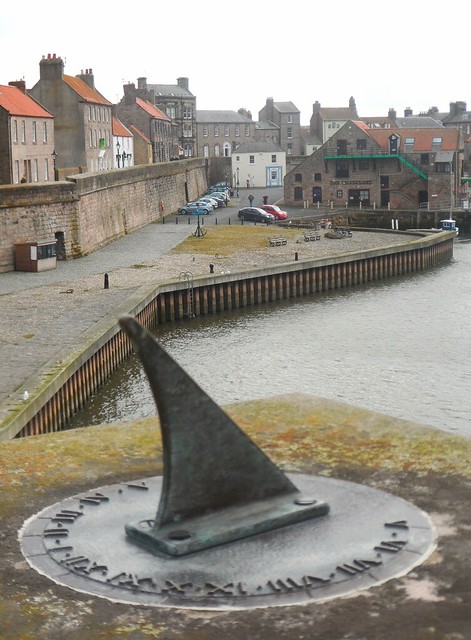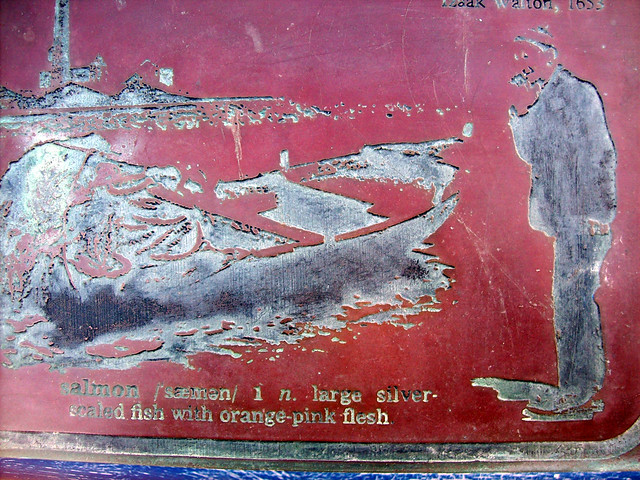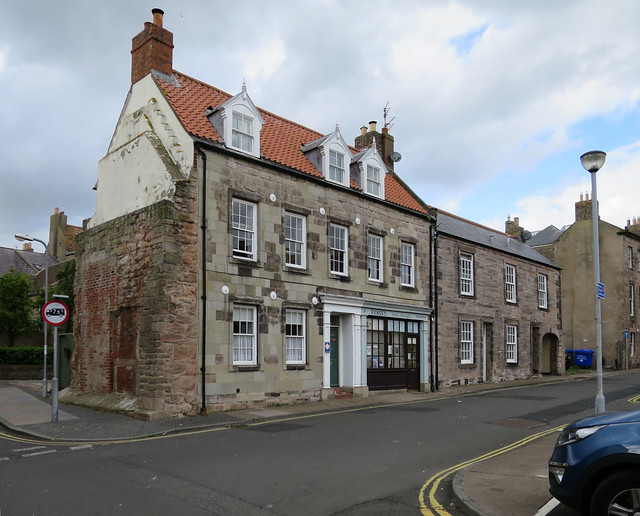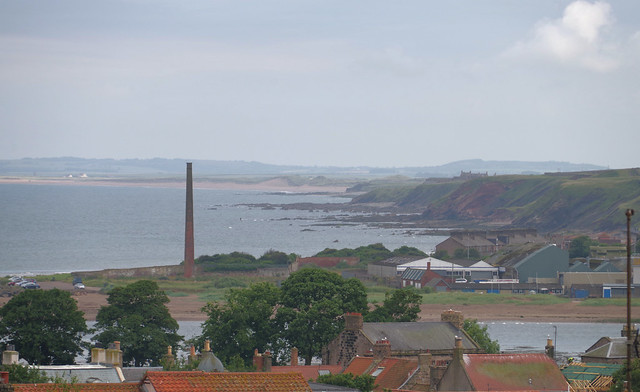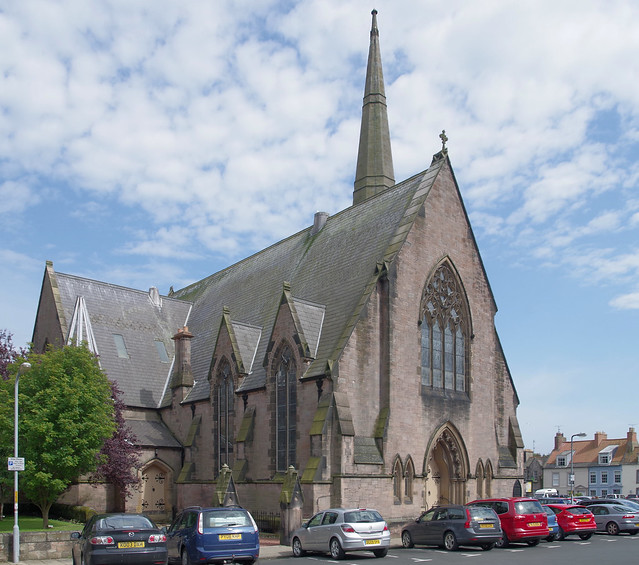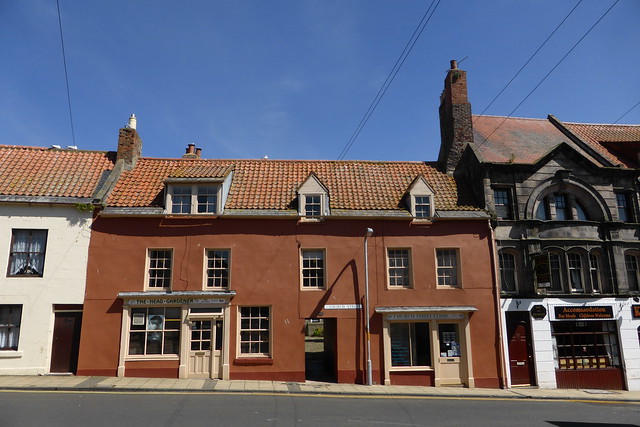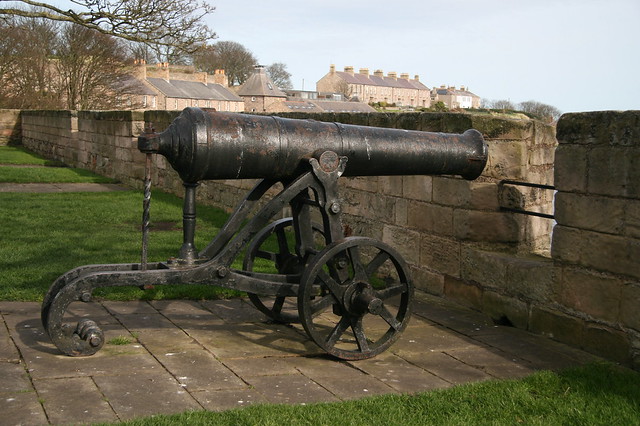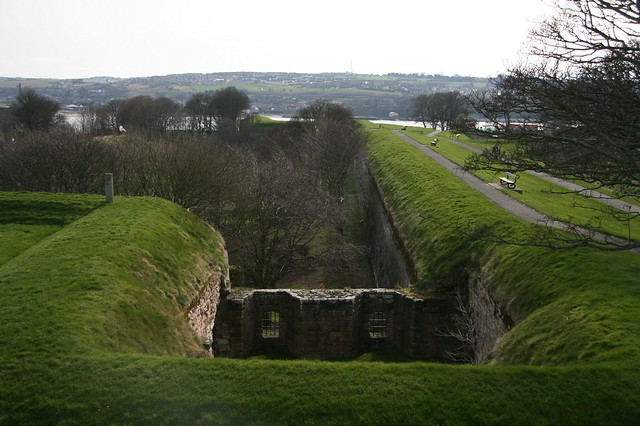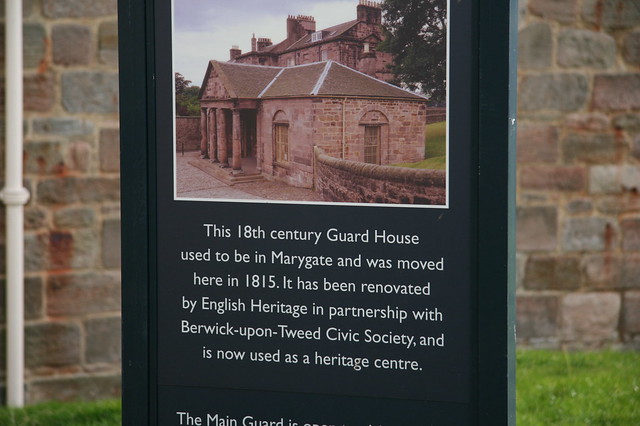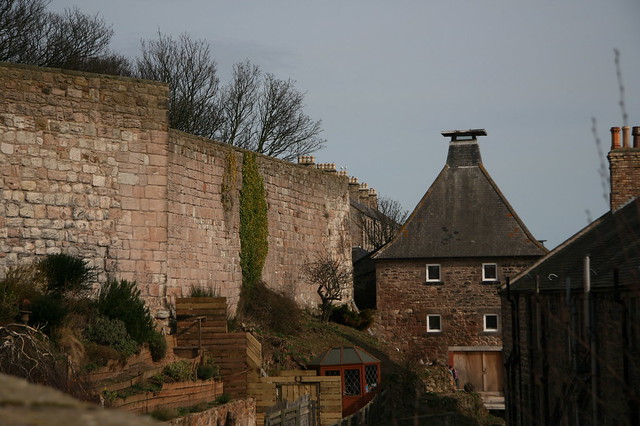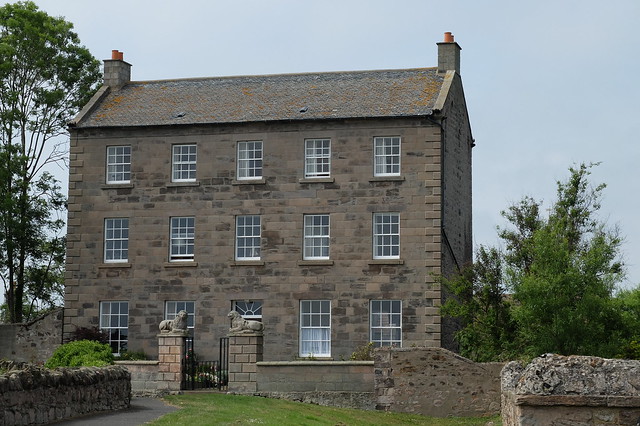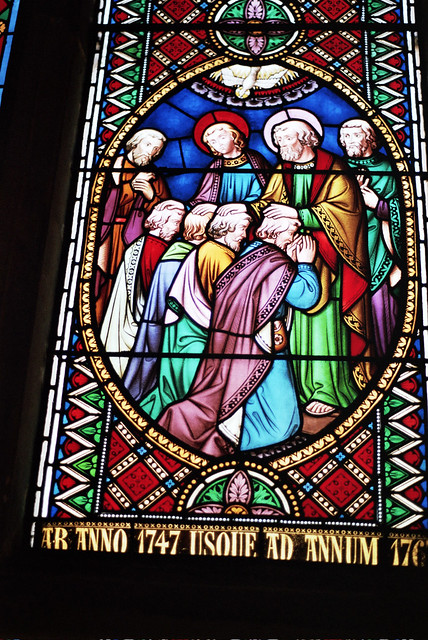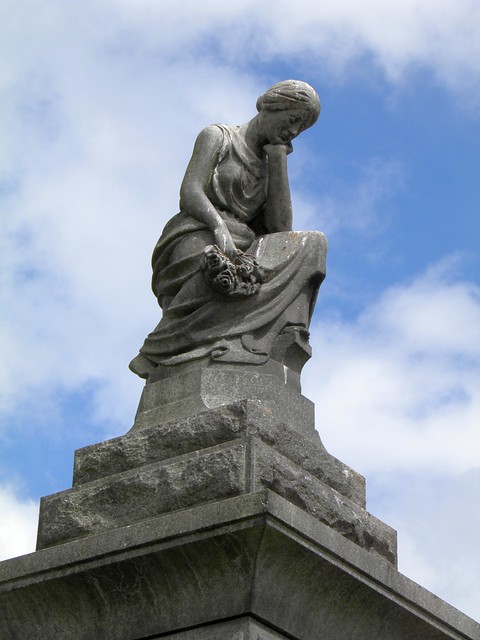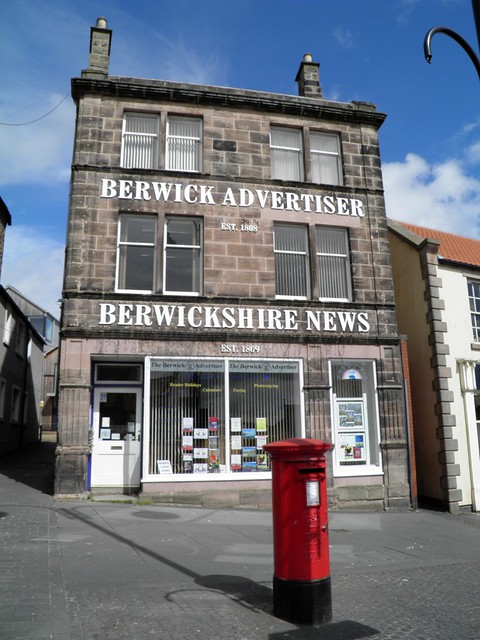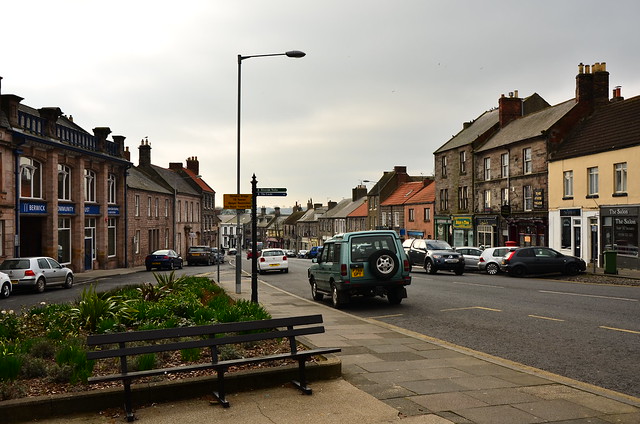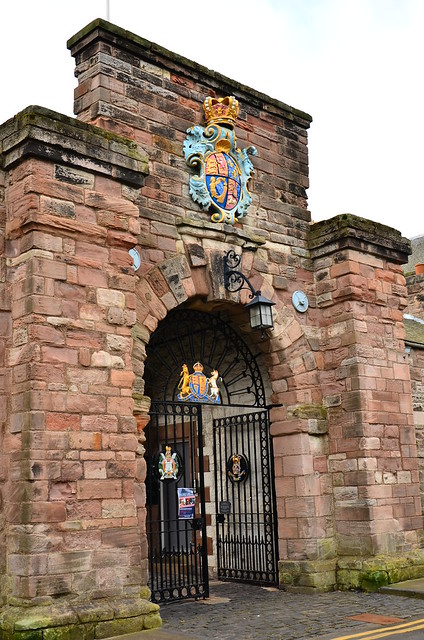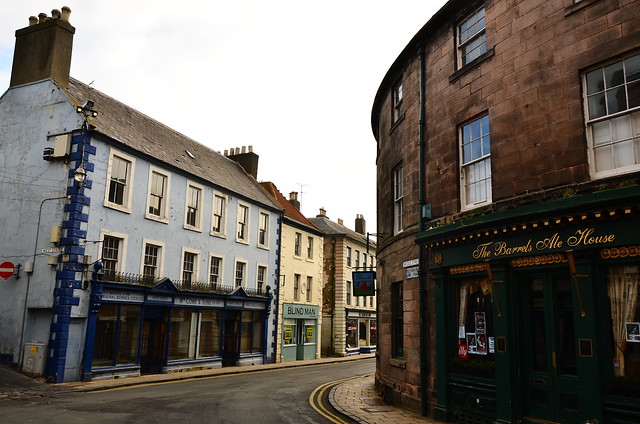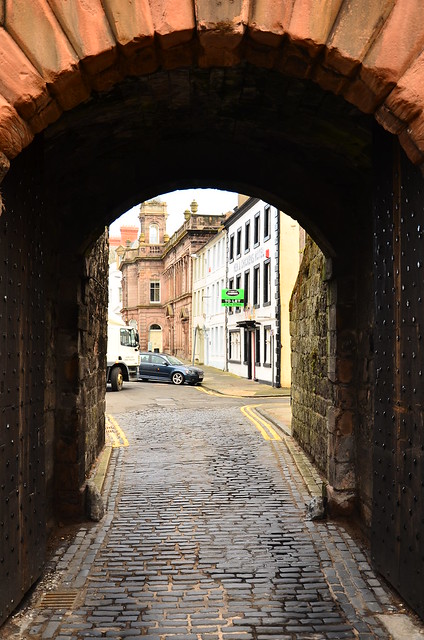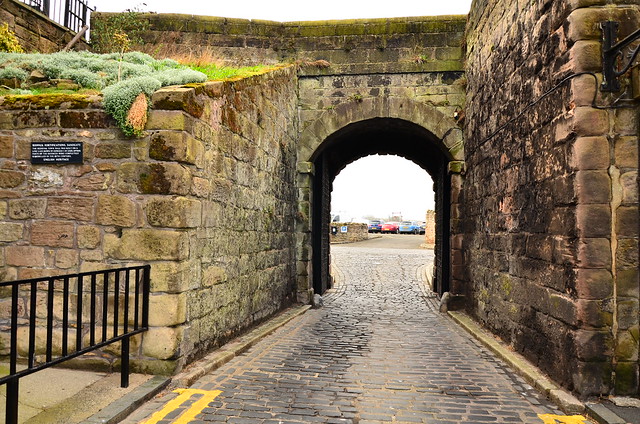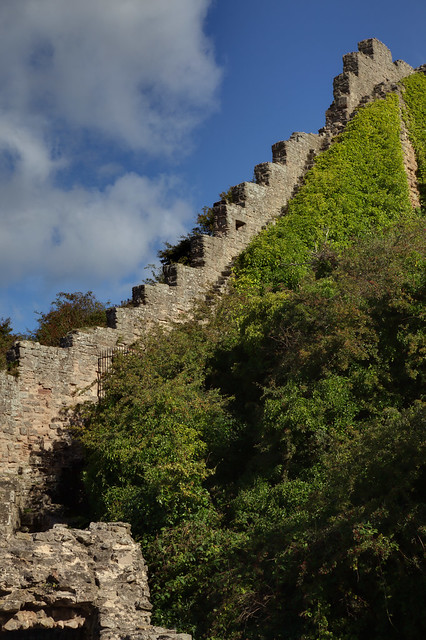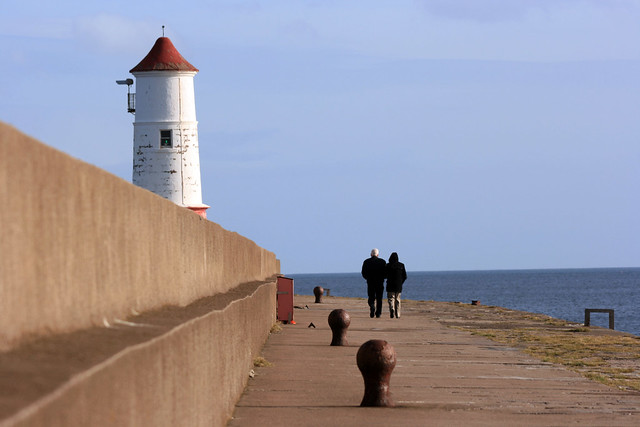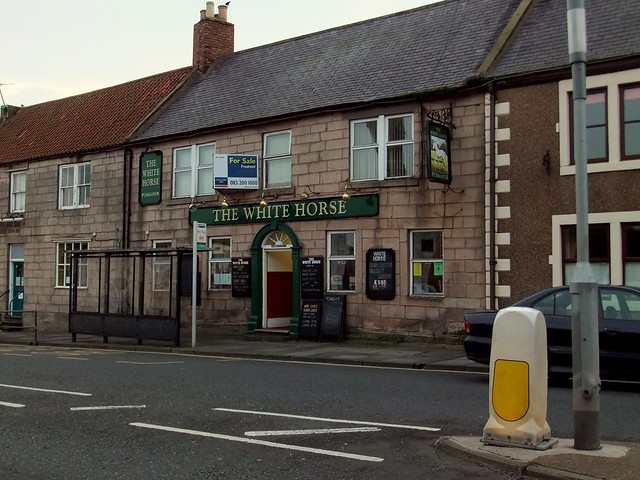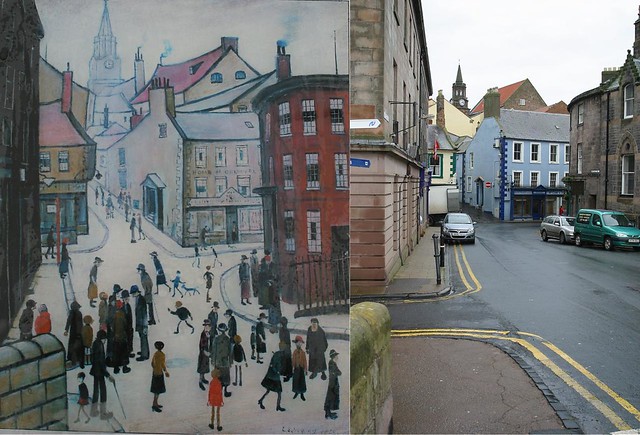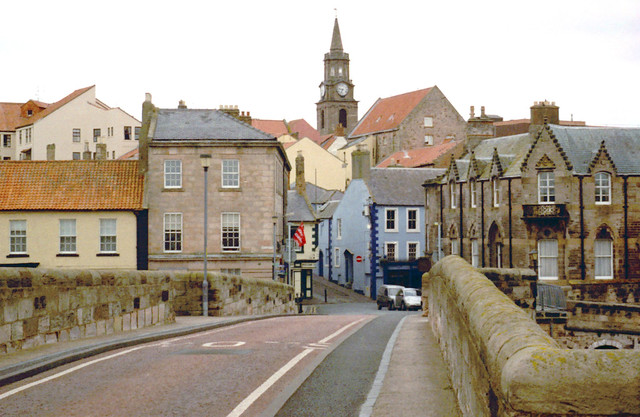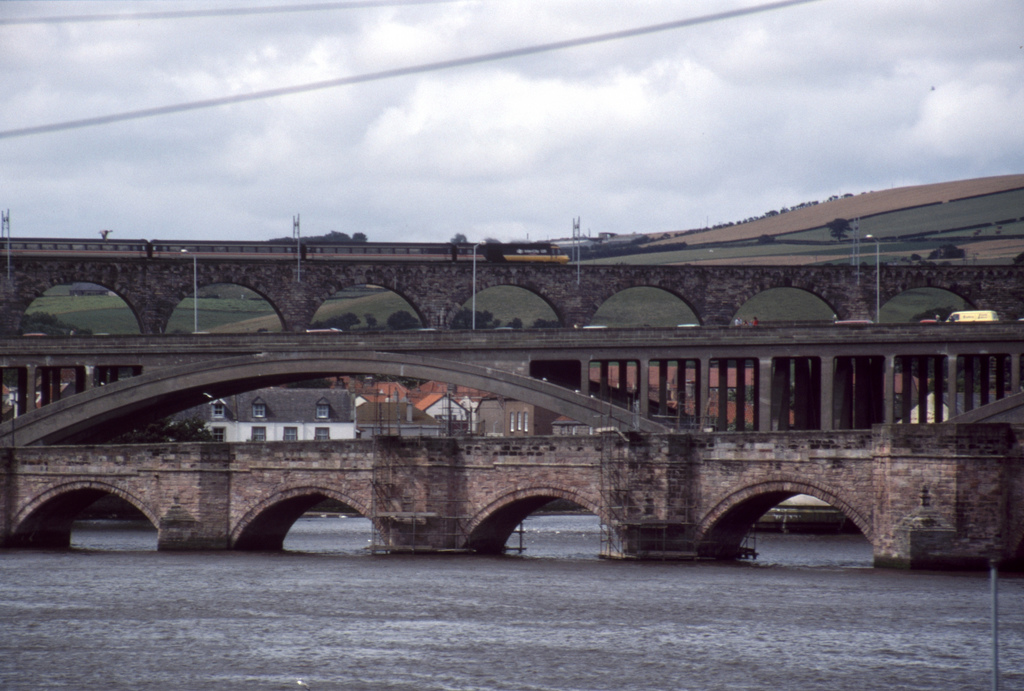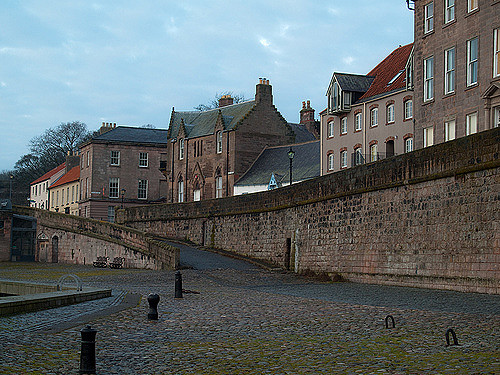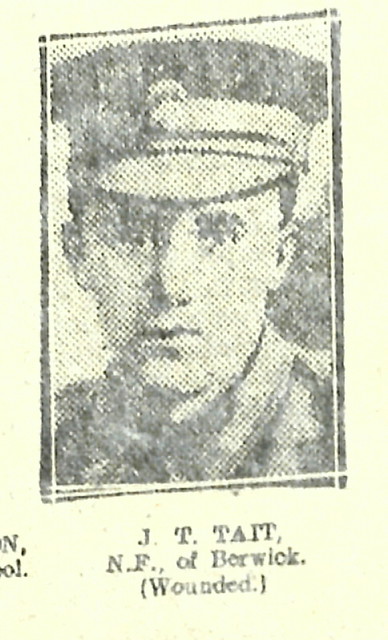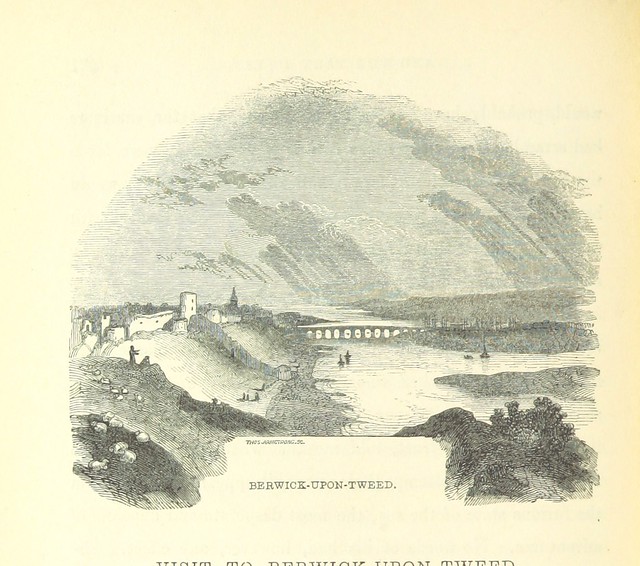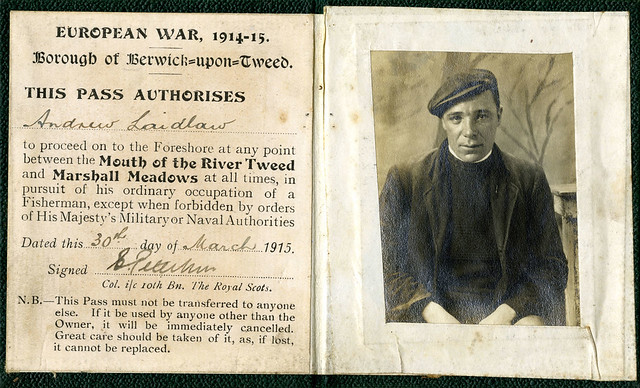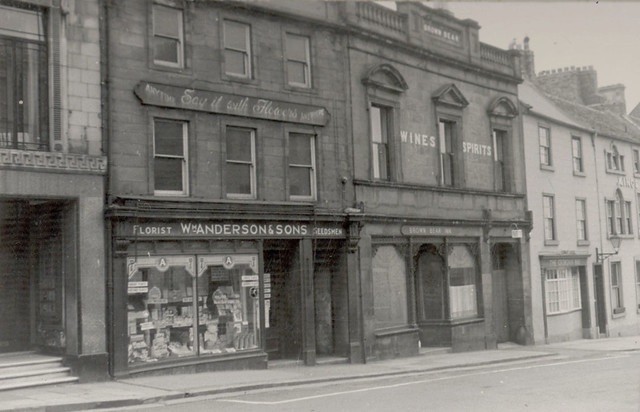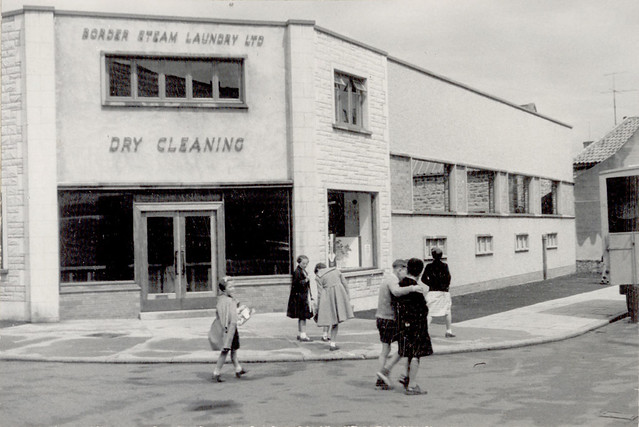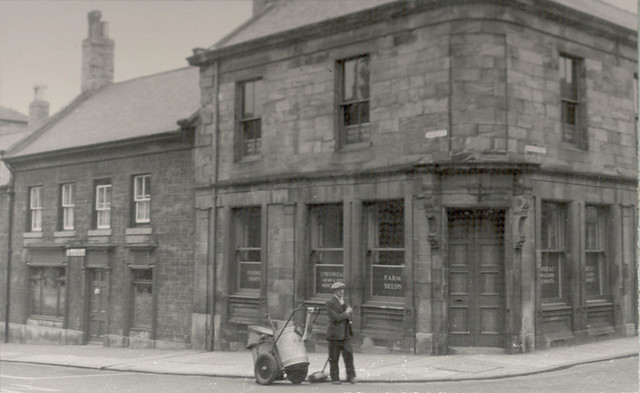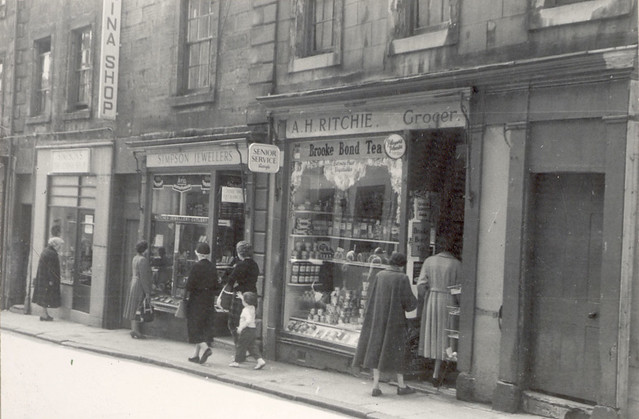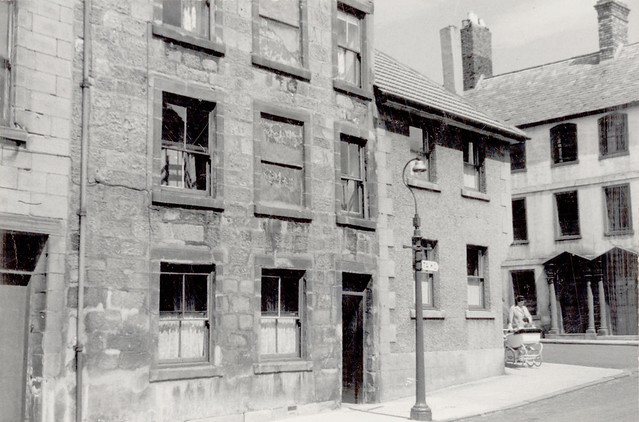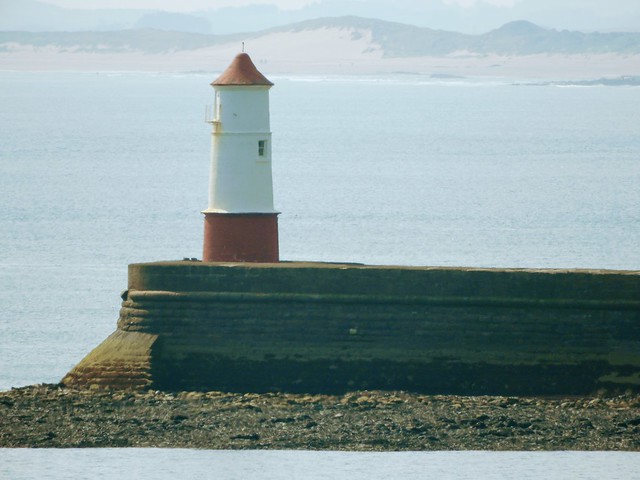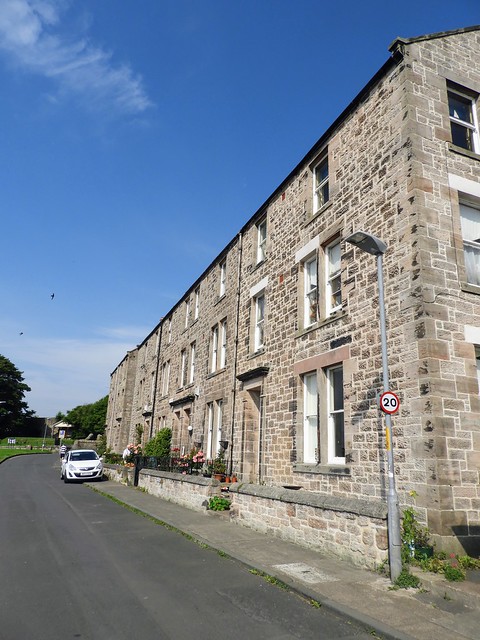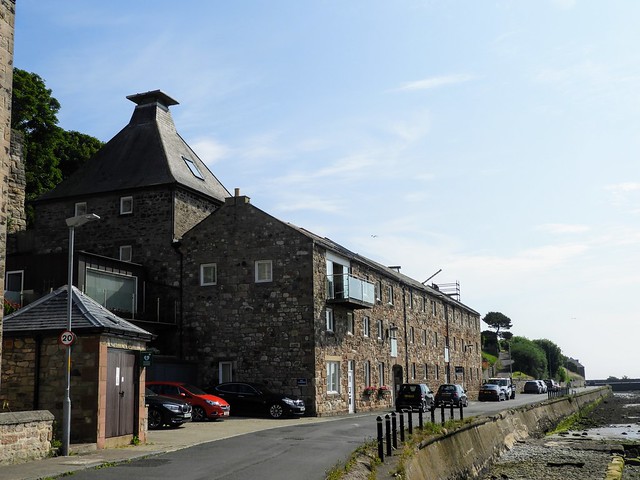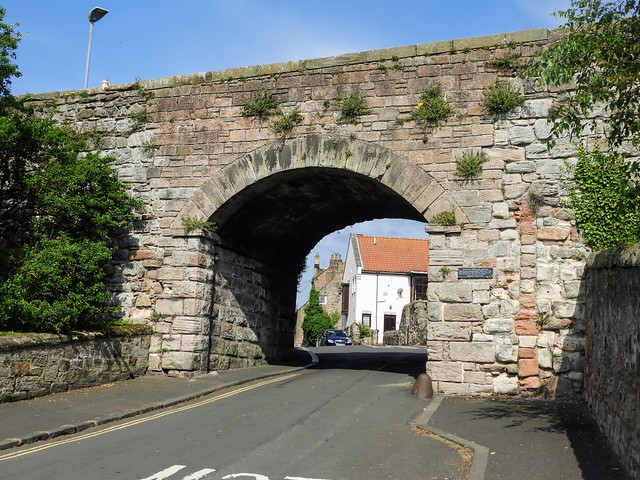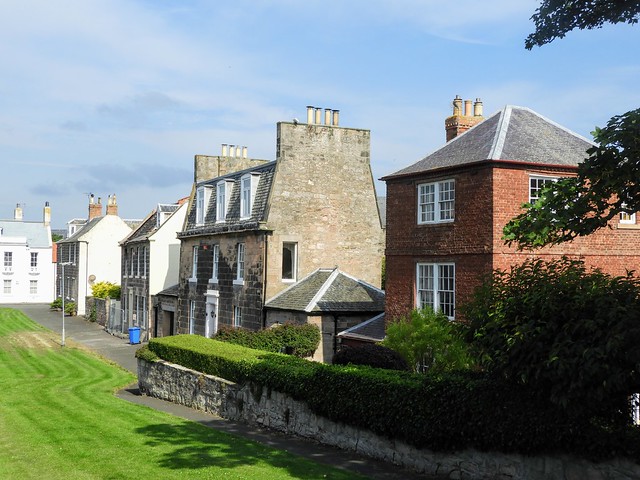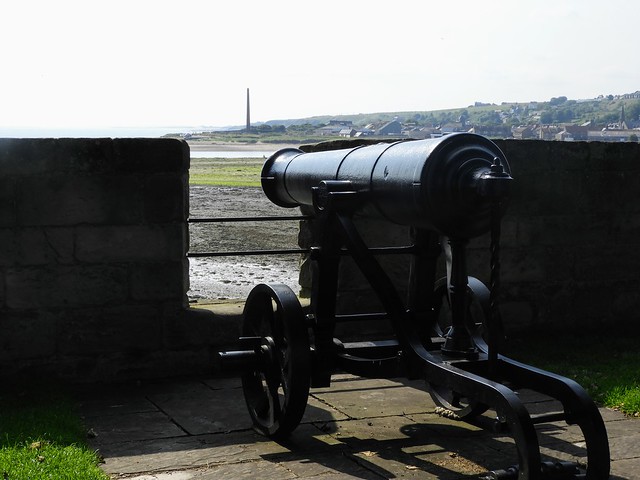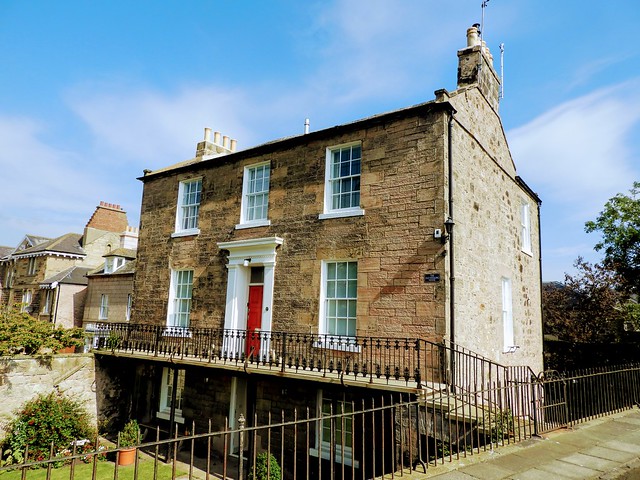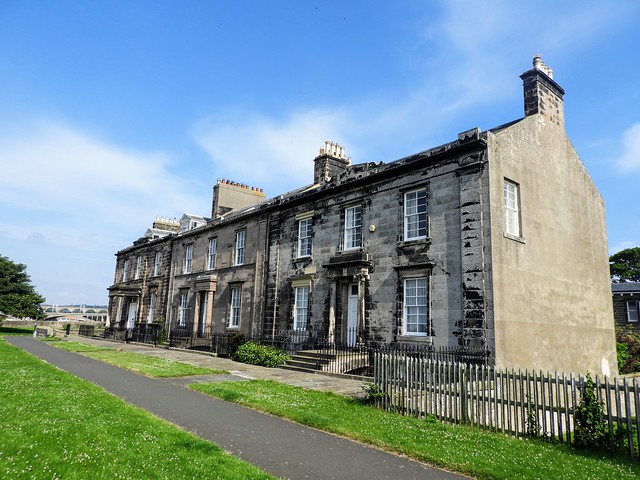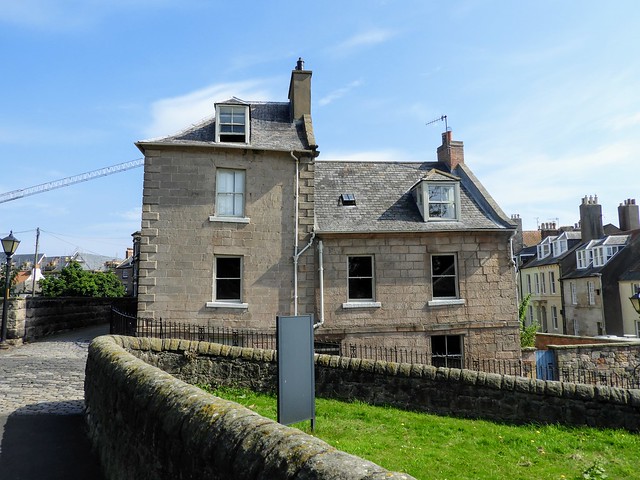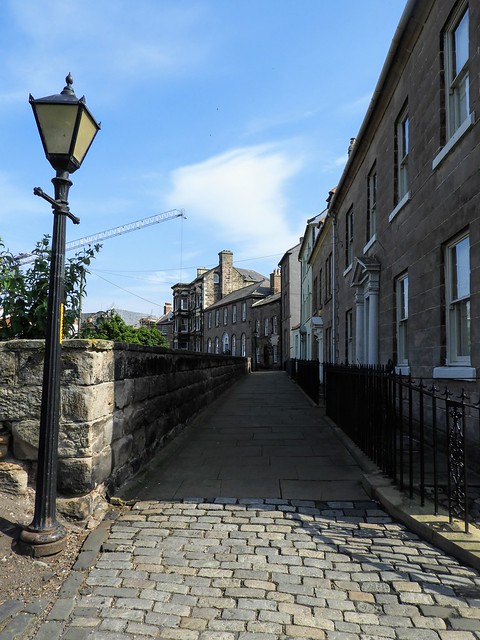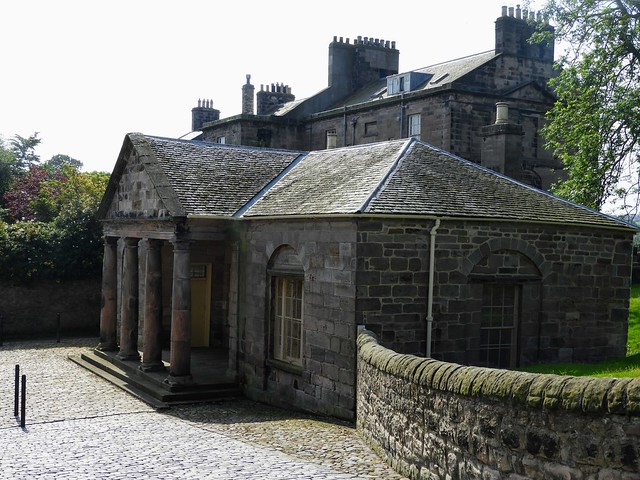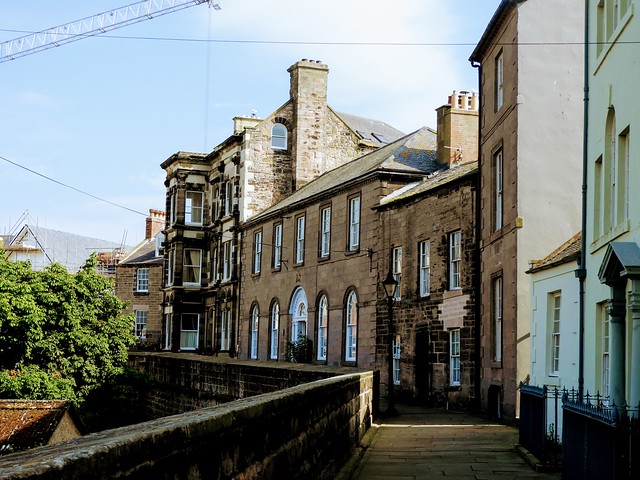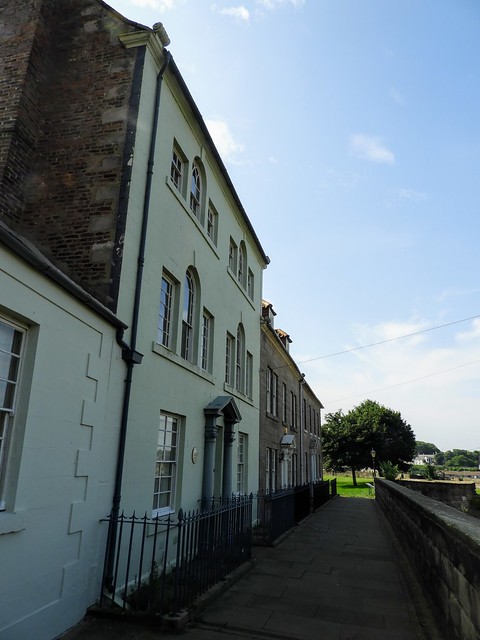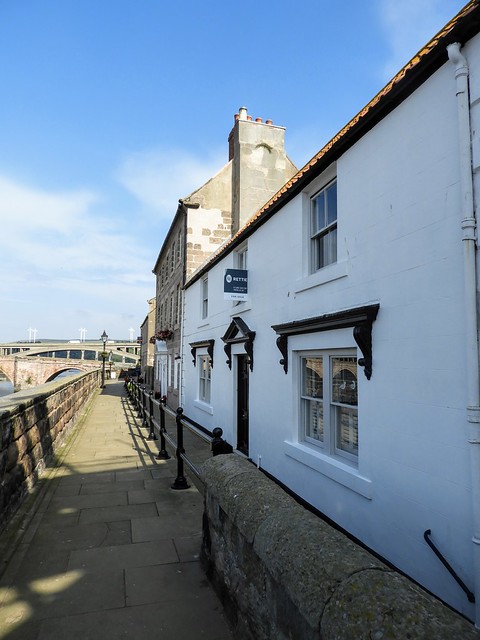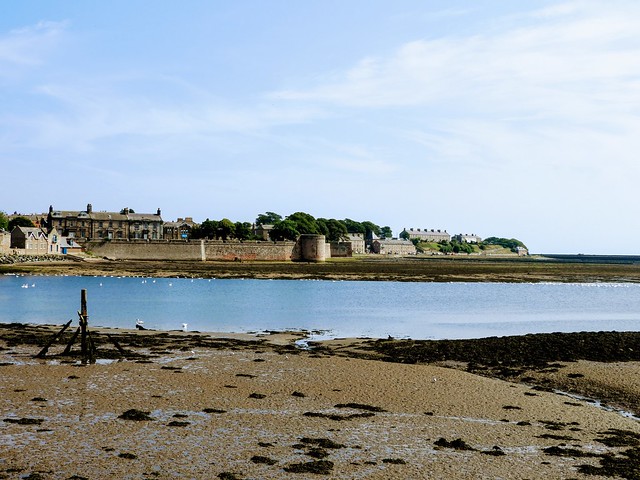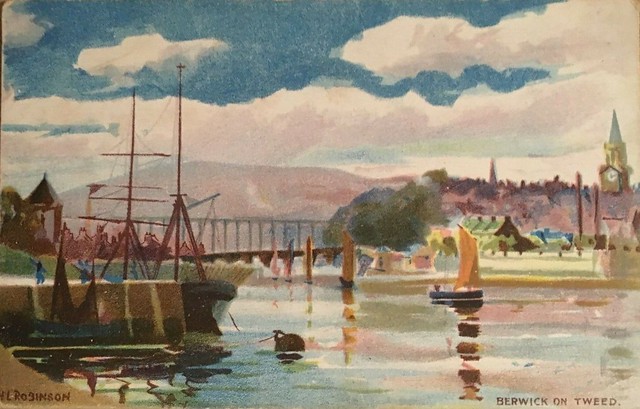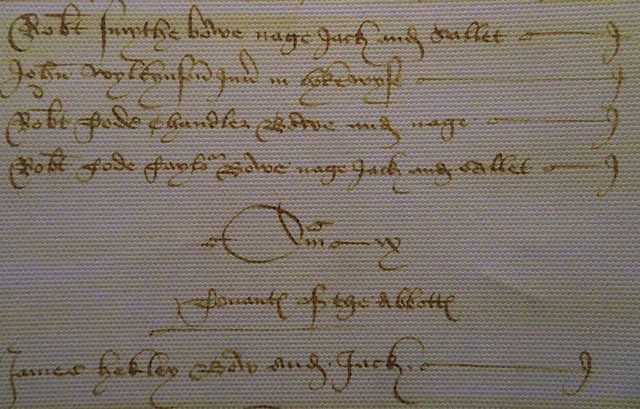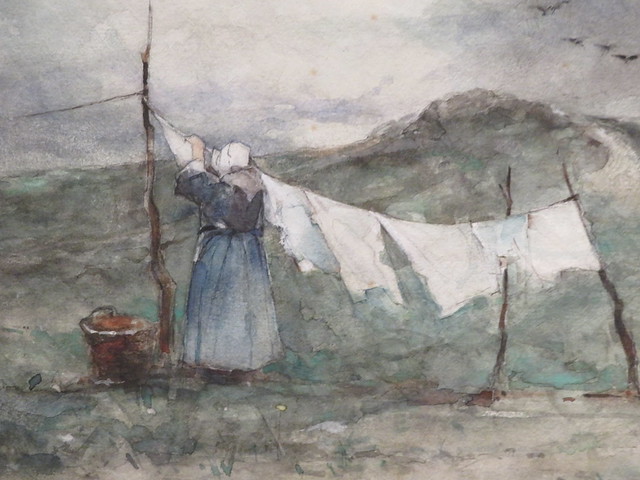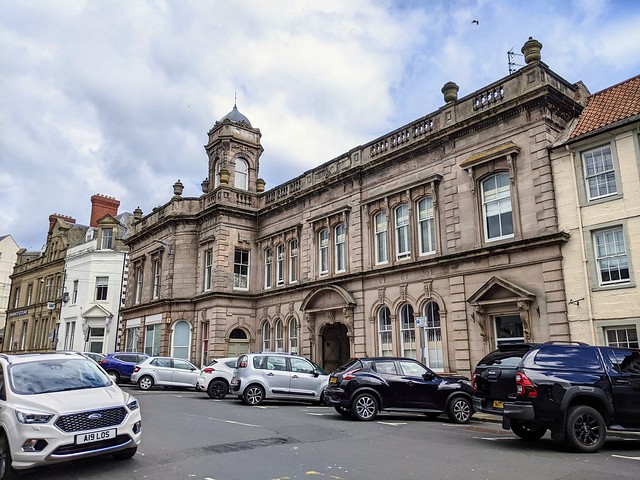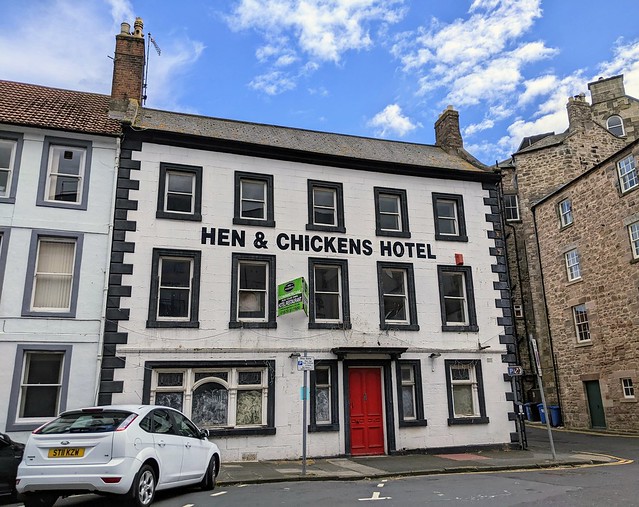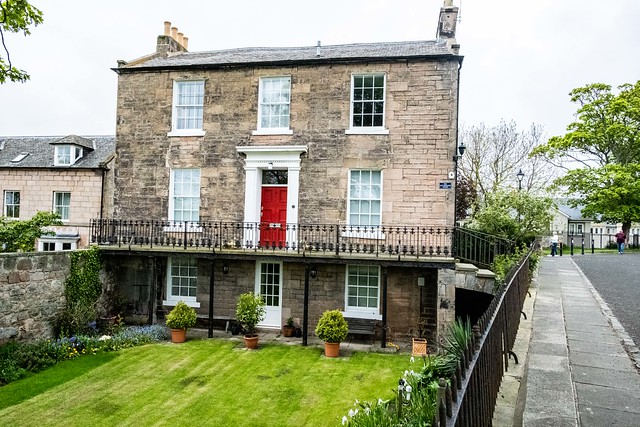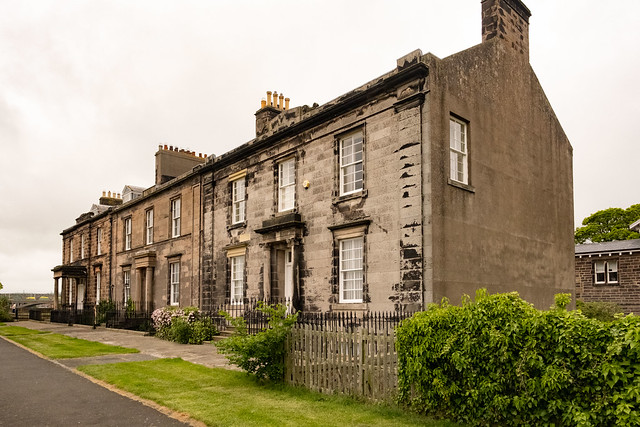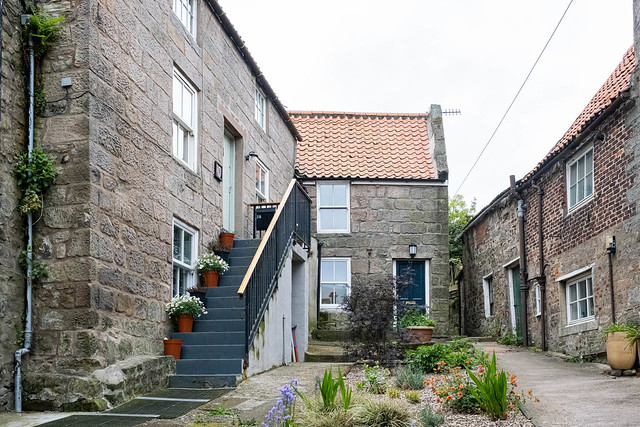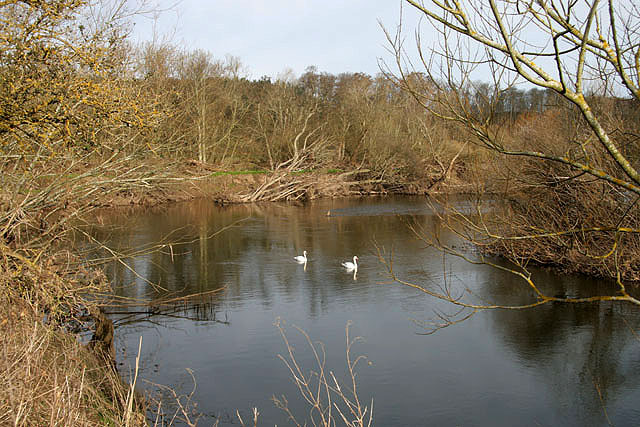Topics > Northumberland > Berwick upon Tweed
Berwick upon Tweed
The northernmost town in England, on the East coast at the mouth of the River Tweed.
Early history
In the post-Roman period, the area was inhabited by the Brythons of Bryneich. Later, the region became part of the Anglian kingdom of Bernicia. Bernicia later united with the kingdom of Deira to form Northumbria, which in the mid-10th century entered the Kingdom of England under Eadred. Berwick itself was founded as an Anglo-Saxon settlement during the time of the kingdom of Northumbria.
Scottish burgh
Between the late 10th and early 11th centuries, the land between the rivers Forth and Tweed came under Scottish control, either through conquest or through cession. Berwick was made a royal burgh in the reign of David I. A mint was present in the town by 1153.
While under Scottish control, Berwick was referred to as "South Berwick" in order to differentiate it from the town of North Berwick, East Lothian, near Edinburgh.
Berwick's strategic position on the Anglo-Scottish border during centuries of war between the two nations and its relatively great wealth led to a succession of raids, sieges and takeovers. William I of Scotland invaded and attempted to capture northern England in 1173-74. After his defeat, Berwick was ceded to Henry II of England. It was later sold back to William by Richard I of England in order to raise funds for his Crusade. Berwick had become a prosperous town by the middle of the 13th century. According to William Edington, a bishop and chancellor of Scotland, Berwick was "so populous and of such commercial importance that it might rightly be called another Alexandria, whose riches were the sea and the water its walls". In 1291–92 Berwick was the site of Edward I of England's arbitration in the contest for the Scottish crown between John Balliol and Robert Bruce, 5th Lord of Annandale. The decision in favour of Balliol was pronounced in the Great Hall of Berwick Castle on 17 November 1292.
Berwick heyheydecay.net.jpg|thumb|Part of the town walls
In 1296 England went to war with France, with whom Scotland was in alliance. Balliol invaded England in response, sacking Cumberland. Edward in turn invaded Scotland and captured Berwick, destroying much of the town and massacring many of the inhabitants. Edward I went again to Berwick in August 1296 to receive formal homage from some 2,000 Scottish nobles, after defeating the Scots at the Battle of Dunbar in April and forcing John Balliol to abdicate at Kincardine Castle the following July. It was at this time that work began on building the town walls (and rebuilding the earlier Castle); these fortifications were complete by 1318 and subsequently improved under Scottish rule. An arm of William Wallace was displayed at Berwick after his execution and quartering on 23 August 1305. In 1314 Edward II of England mustered 25,000 men at Berwick, who later fought in (and lost) the Battle of Bannockburn.
Between 1315 and 1318 Scottish armies, sometimes with the help of Flemish and German privateers, besieged and blockaded the town, finally invading and capturing it in April 1318. England retook Berwick some time shortly after the Battle of Halidon Hill in 1333. In October 1357 a treaty was signed at Berwick by which the Scottish estates undertook to pay 100,000 marks as a ransom for David II of Scotland, who had been taken prisoner at the Battle of Neville's Cross on 17 October 1346.
In 1461 Berwick was ceded back to Scotland by Margaret of Anjou on behalf of her husband, Henry VI, in return for help against the Yorkists during the Wars of the Roses. Robert Lauder of Edrington was put in charge of the castle. He was succeeded in 1474 by David, Earl of Crawford. On 3 February 1478, Robert Lauder of The Bass and Edrington was again appointed Keeper of the castle, a position that he held until the final year of Scottish occupation, when Patrick Hepburn, 1st Lord Hailes, had possession.
Berwick had a mediaeval hospital for the sick and poor which was administered by the Church. A charter under the Great Seal of Scotland, confirmed by King James I of Scotland, grants the king's chaplain "Thomas Lauder of the House of God or Hospital lying in the burgh of Berwick-upon-Tweed, to be held to him for the whole time of his life with all lands, teinds, rents and profits, etc., belonging to the said hospital, as freely as is granted to any other hospital in the Kingdom of Scotland; the king also commands all those concerned to pay to the grantee all things necessary for the support of the hospital. Dated at Edinburgh June 8, in the 20th year of his reign."
In 1482 Richard, Duke of Gloucester (later Richard III) recaptured the town. Over the course of a little more than 400 years, Berwick had changed hands more than a dozen times.
English town
In 1551 the town was made a county corporate. During the reign of Queen Elizabeth I of England, vast sums – one source reports "£128,648, the most expensive undertaking of the Elizabethan period" – were spent on its fortifications, in a new Italian style (trace italienne), designed both to withstand artillery and to facilitate its use from within the fortifications. These fortifications have been described as "the only surviving walls of their kind". Sir Richard Lee designed some of the Elizabethan works.
In 1639 the army of Charles I faced that of General Alexander Leslie at Berwick in the Bishops' Wars, which were concerned with bringing the Presbyterian Church of Scotland under Charles's control. The two sides did not fight, but negotiated a settlement, "Pacification of Berwick", in June.
Holy Trinity Church was built in 1648–52; a rare example of a church being built in the Commonwealth period.
British town
In 1707, the Act of Union between England and Scotland largely ended the contention about which of the countries Berwick belonged to. Since then, Berwick remained within the laws and legal system of England and Wales. The Wales and Berwick Act 1746 (since repealed) deemed that whenever legislation referred to England it applied to Berwick. England now is officially defined as "subject to any alteration of boundaries under Part IV of the Local Government Act 1972, the area consisting of the counties established by section 1 of that Act, Greater London and the Isles of Scilly.", which thus includes Berwick.
Berwick remained a county in its own right, and was not included in Northumberland for Parliamentary purposes until 1885. In the same year, the Redistribution of Seats Act reduced the number of Members of Parliament (MPs) returned by the town from two to one.
In the reorganisation of English local government on 1 April 1974 the Borough of Berwick-upon-Tweed was created by the merger of the previous borough of Berwick-upon-Tweed with Belford Rural District, Glendale Rural District and Norham and Islandshires Rural District.
The Interpretation Act 1978 provides that in legislation passed between 1967 and 1974, "a reference to England includes Berwick upon Tweed and Monmouthshire".
In 2008 Scottish National Party Member of Scottish Parliament (MSP) Christine Grahame made calls in the Scottish Parliament for Berwick to become part of Scotland again, saying, "Even the Berwick-upon-Tweed Borough Council leader, who is a Liberal Democrat, backs the idea and others see the merits of reunification with Scotland." The Liberal Democrat MSP Jeremy Purvis, who was born and brought up in Berwick, also asked for the border to be moved twenty miles south (i.e., a significant distance south of the Tweed) to include Berwick borough council rather than just the town. stating: "There’s a strong feeling that Berwick should be in Scotland. Until recently, I had a gran in Berwick and another in Kelso, and they could see that there were better public services in Scotland. Berwick as a borough council is going to be abolished and it would then be run from Morpeth, more than 30 miles away." However, Alan Beith, the Liberal Democrat MP for Berwick, said the move would require a massive legal upheaval and is not realistic. The issue was set to be the centre of a new BBC comedy-drama series, A Free Country, commissioned in 2008 from writer Tony Saint, but to date this project has vanished from view.
In 2009 the Borough of Berwick-upon-Tweed was abolished as part of wider structural changes to local government in England. All functions previously exercised by Berwick Borough Council were transferred to Northumberland County Council, which is the unitary authority for the area.
Visit the page: Berwick upon Tweed for references and further details. You can contribute to this article on Wikipedia.

from Newcastle University (youtube)
Pigeon Race At Berwick-Upon-Tweed (1939)
Pinned by Co-Curate Team
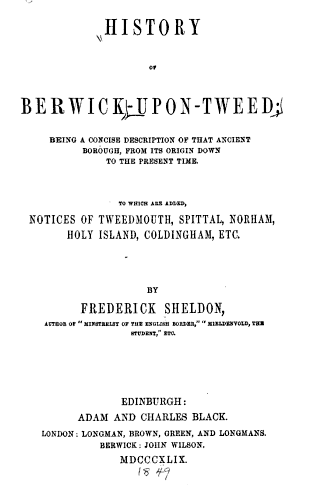
from http://books.google.co.uk/boo…
History of Berwick-upon-Tweed: being a concise description of that ancient borough, from its origin down to the present time, to which are added notices of Tweedmouth, Spittal, Norham, Holy Island, Coldingham, etc. Frederick Sheldon. 1849
- Book from 1849 digitised by Google and available as a free eBook
Added by
Simon Cotterill
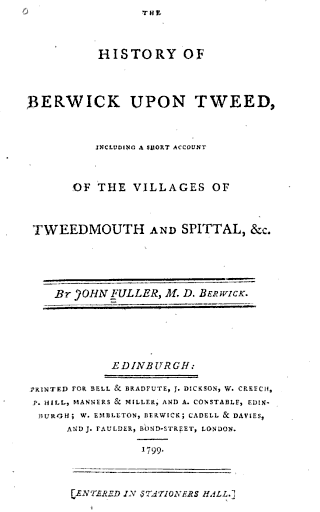
from http://books.google.co.uk/boo…
The History of Berwick Upon Tweed: Including a Short Account of the Villages of Tweedmouth and Spittal, etc. John Fuller, 1799
- Book from 1799 digitised by Google and available as a free eBook
Added by
Simon Cotterill
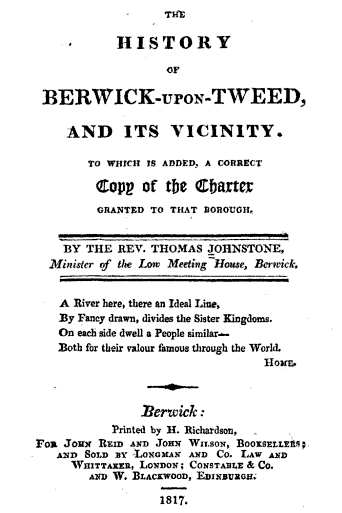
from http://books.google.co.uk/boo…
The History of Berwick-upon-tweed, and Its Vicinity: To which is Added a Correct Copy of the Charter Granted to that Borough. Thomas Johnstone. 1817
- Book from 1817 digitised and available as a free Google eBook.
Added by
Simon Cotterill

from Flickr (flickr)
Old Property (Main Street Tweedmouth) on the Lowry Trail in Berwick upon Tweed
Pinned by Simon Cotterill
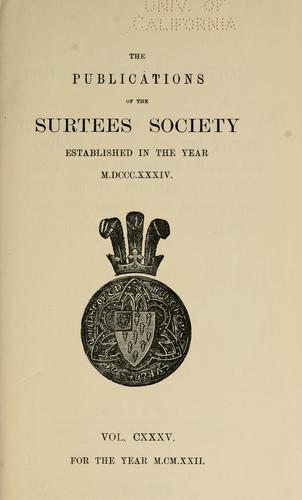
from https://openlibrary.org/works…
Durham protestations: The returns made to the House of Commons in 1641/2 for the maintenance of the Protestant religion for the county palatine of Durham, for the borough of Berwick-upon-Tweed and the parish of Morpeth.
- Digitised version of the book first published 1922 the Surtees Society by Andrews & Co. and, B. Quaritch, ltd. in Durham, London . eBook in a variety of formats or …
Added by
Simon Cotterill
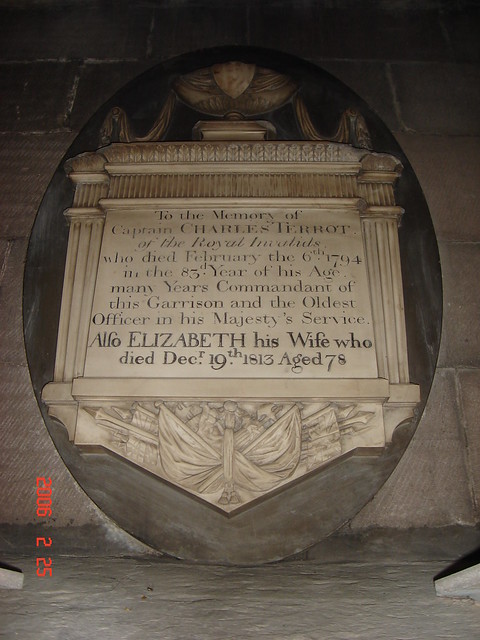
from Flickr (flickr)
Interesting monument - to Captain Charles Terrot of the Royal Invalids, Commander of the Berwick Garrison and the oldest officer in His Majesty's service, who died in 1794, and his wife Elizabeth who died in 1813.
Pinned by Simon Cotterill
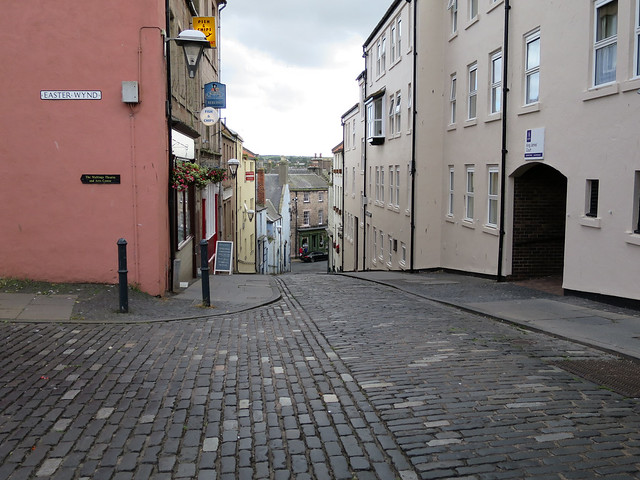
from Flickr (flickr)
West Street, Berwick - towards the River Tweed and Bridge End
Pinned by Pat Thomson
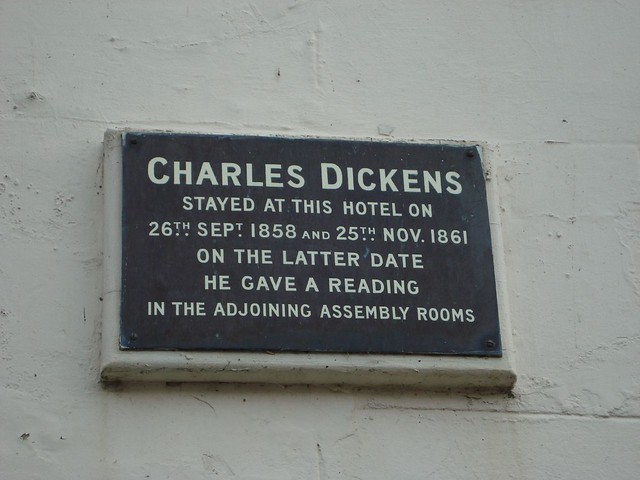
from Flickr (flickr)
... around Berwick on Tweed ... visitor, Charles Dickens.
Pinned by Simon Cotterill
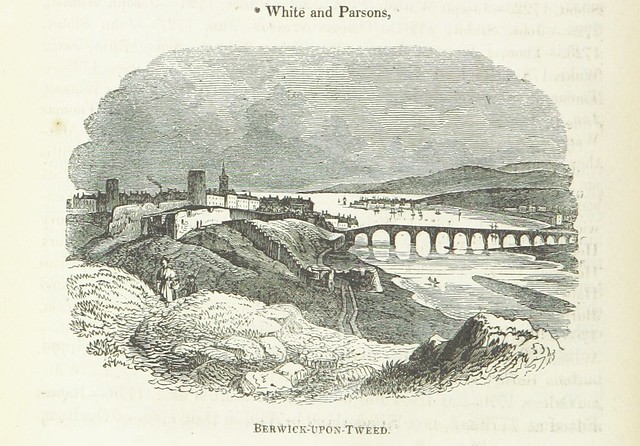
from Flickr (flickr)
Image taken from page 250 of 'The Local Historian's Table Book of remarkable occurrences, historical facts, traditions, legendary and descriptive ballads, connected with the Counties of Newcastle-upon-Tyne, Northumberland, and Durham. Historical Division.
Pinned by Simon Cotterill

Co-Curate Page
Mabel Philipson (1886 - 1951)
- Overview About Mabel Philipson Mabel Philipson (1886 - 1951). Under her maiden name, Mabel Russell was a well-known musical comedy actress. In 1923 she became the 4th female Member of …

Co-Curate Page
Thomas Widdrington (c.1600 - 1664)
- Overview About Thomas Widdrington Thomas Widdrington, of Cheeseburn Grange near Stamfordham, was a politician and judge in the 17th century. He was Recorder of Berwick from 1631 to 1658 and …

from Youtube (youtube)
ROYAL: Edward, Prince of Wales opens the new bridge across the Tweed (1928)
Pinned by Simon Cotterill


from Newcastle University (youtube)
Pigeon Race At Berwick-Upon-Tweed (1939)
Pinned by Co-Curate Team

from http://books.google.co.uk/boo…
History of Berwick-upon-Tweed: being a concise description of that ancient borough, from its origin down to the present time, to which are added notices of Tweedmouth, Spittal, Norham, Holy Island, Coldingham, etc. Frederick Sheldon. 1849
- Book from 1849 digitised by Google and available as a free eBook
Added by
Simon Cotterill

from http://books.google.co.uk/boo…
The History of Berwick Upon Tweed: Including a Short Account of the Villages of Tweedmouth and Spittal, etc. John Fuller, 1799
- Book from 1799 digitised by Google and available as a free eBook
Added by
Simon Cotterill

from http://books.google.co.uk/boo…
The History of Berwick-upon-tweed, and Its Vicinity: To which is Added a Correct Copy of the Charter Granted to that Borough. Thomas Johnstone. 1817
- Book from 1817 digitised and available as a free Google eBook.
Added by
Simon Cotterill

from Flickr (flickr)
Old Property (Main Street Tweedmouth) on the Lowry Trail in Berwick upon Tweed
Pinned by Simon Cotterill

from https://openlibrary.org/works…
Durham protestations: The returns made to the House of Commons in 1641/2 for the maintenance of the Protestant religion for the county palatine of Durham, for the borough of Berwick-upon-Tweed and the parish of Morpeth.
- Digitised version of the book first published 1922 the Surtees Society by Andrews & Co. and, B. Quaritch, ltd. in Durham, London . eBook in a variety of formats or …
Added by
Simon Cotterill

from Flickr (flickr)
Interesting monument - to Captain Charles Terrot of the Royal Invalids, Commander of the Berwick Garrison and the oldest officer in His Majesty's service, who died in 1794, and his wife Elizabeth who died in 1813.
Pinned by Simon Cotterill

from Flickr (flickr)
West Street, Berwick - towards the River Tweed and Bridge End
Pinned by Pat Thomson

from Flickr (flickr)
... around Berwick on Tweed ... visitor, Charles Dickens.
Pinned by Simon Cotterill

from Flickr (flickr)
Image taken from page 250 of 'The Local Historian's Table Book of remarkable occurrences, historical facts, traditions, legendary and descriptive ballads, connected with the Counties of Newcastle-upon-Tyne, Northumberland, and Durham. Historical Division.
Pinned by Simon Cotterill

Co-Curate Page
Mabel Philipson (1886 - 1951)
- Overview About Mabel Philipson Mabel Philipson (1886 - 1951). Under her maiden name, Mabel Russell was a well-known musical comedy actress. In 1923 she became the 4th female Member of …

Co-Curate Page
Thomas Widdrington (c.1600 - 1664)
- Overview About Thomas Widdrington Thomas Widdrington, of Cheeseburn Grange near Stamfordham, was a politician and judge in the 17th century. He was Recorder of Berwick from 1631 to 1658 and …

from Youtube (youtube)
ROYAL: Edward, Prince of Wales opens the new bridge across the Tweed (1928)
Pinned by Simon Cotterill

Northumberland
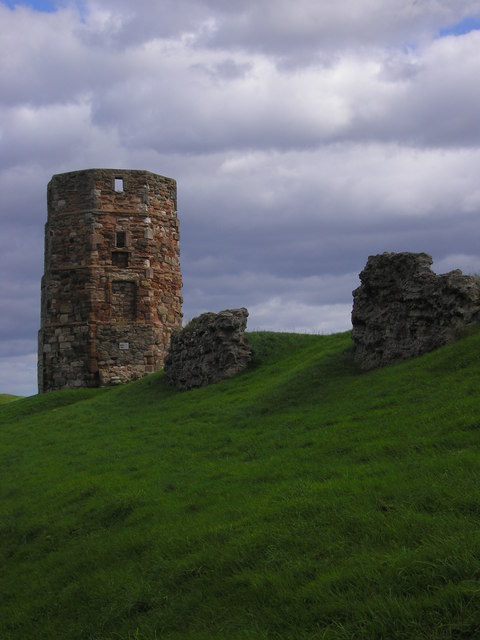
Bell Tower, Berwick-upon-Tweed
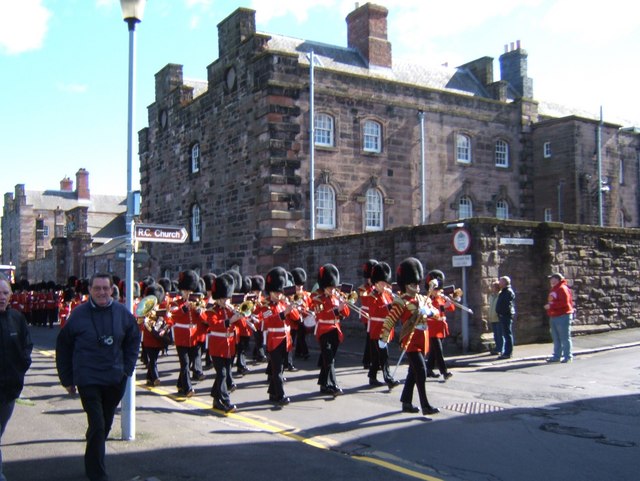
Berwick Barracks
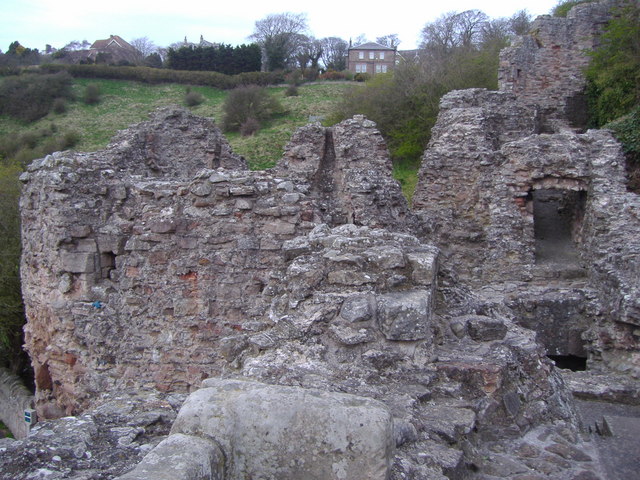
Berwick Castle (ruins)

Berwick Museum & Art Gallery
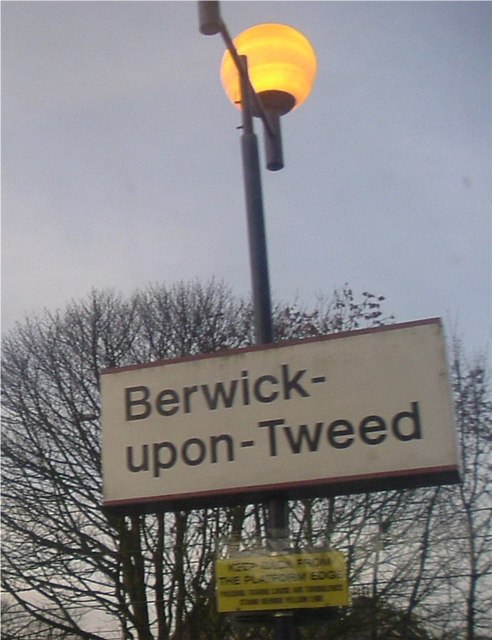
Berwick Station

Berwick-upon-Tweed, 1855
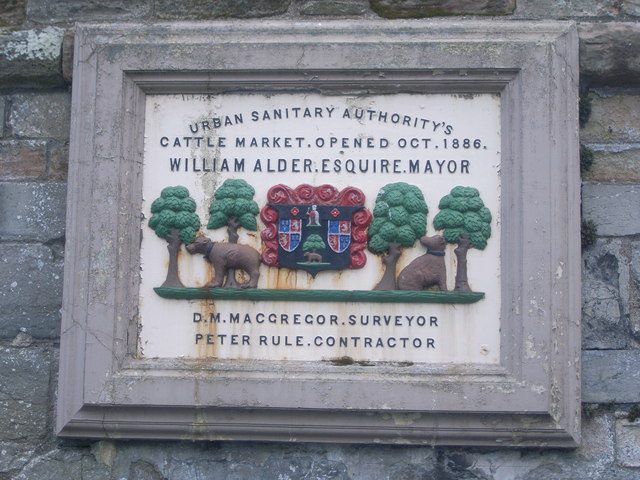
Castlegate, Berwick-upon-Tweed
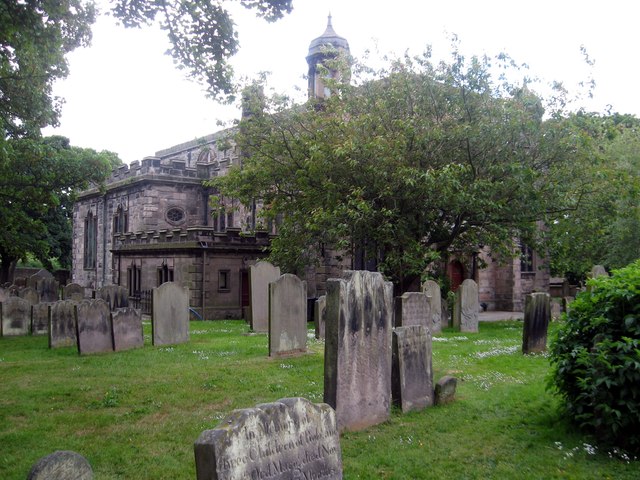
Church of Holy Trinity, Berwick-upon-Tweed

Custom House, Berwick-upon-Tweed

Berwick-Upon-Tweed, 1848
Historic Buildings and Monuments in Berwick upon Tweed
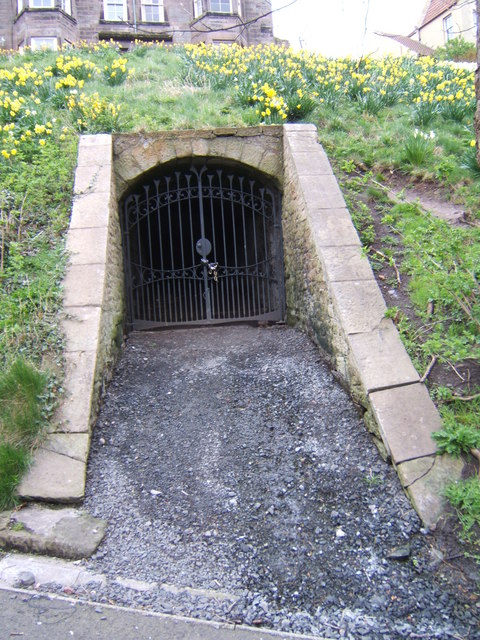
Ice House, Bankhill, Berwick
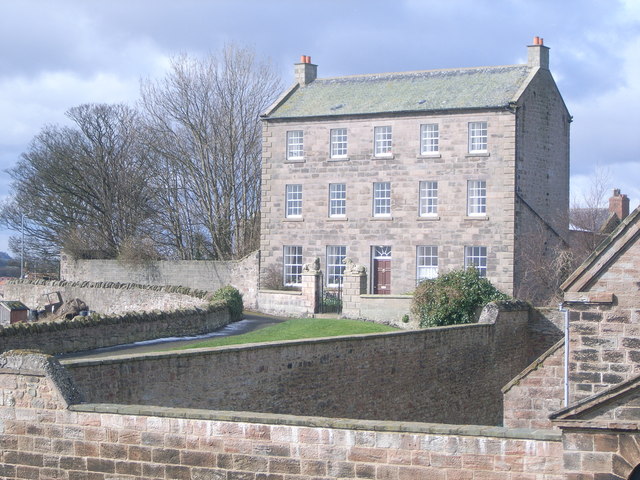
Lions House, Berwick-upon-Tweed
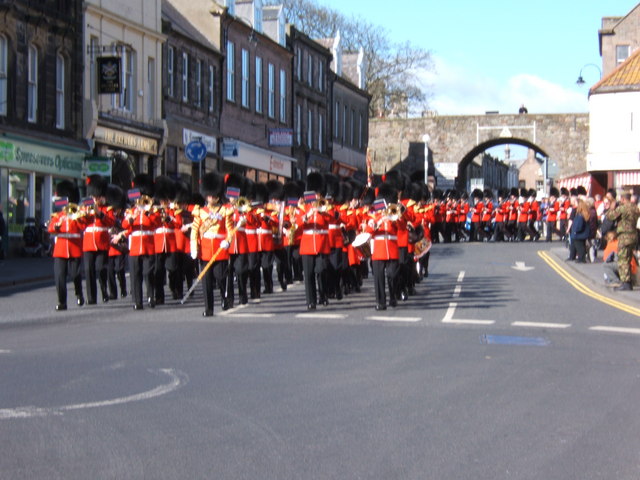
Marygate, Berwick-upon-Tweed
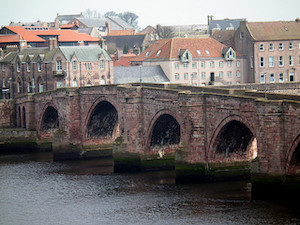
Old Bridge, Berwick-upon-Tweed

Palace Green, Berwick upon Tweed

Palace Street East, Berwick upon Tweed
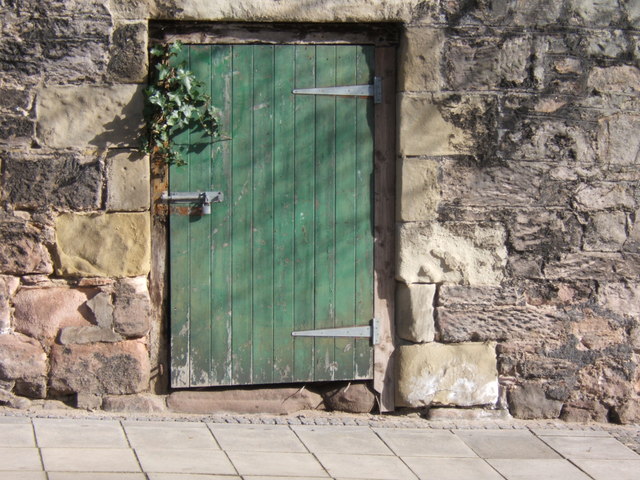
Ravensdowne, Berwick

Royal Border Bridge
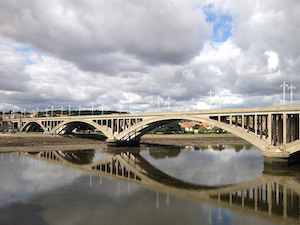
Royal Tweed Bridge

Sandgate, Berwick upon Tweed
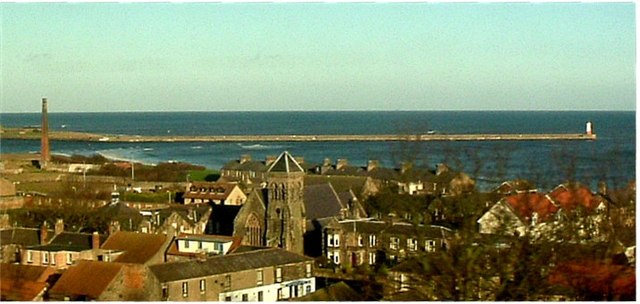
Spittal, Berwick-upon-Tweed
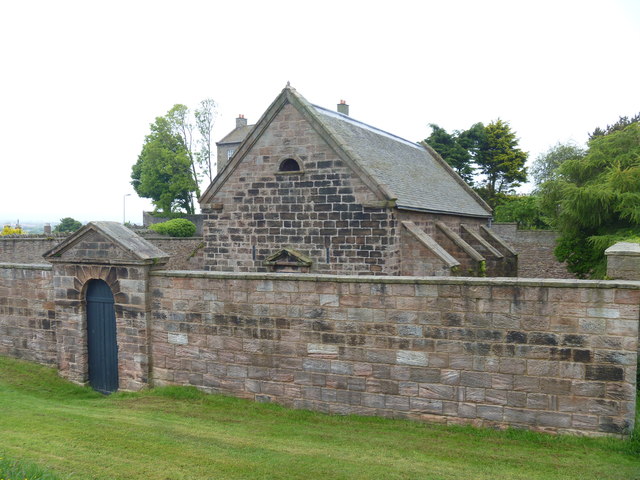
The Magazine, Berwick-upon-Tweed
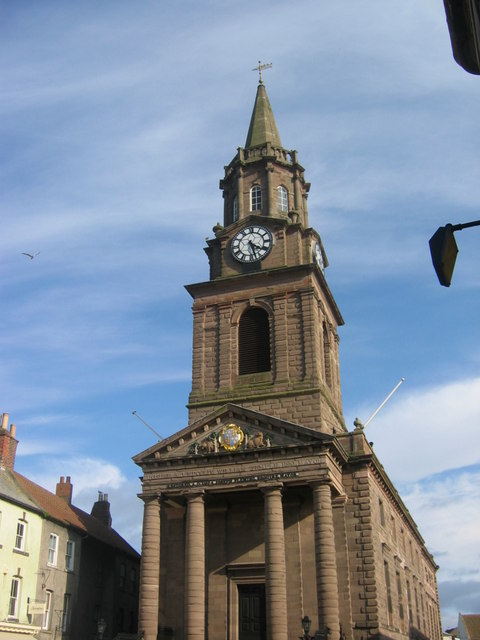
Town Hall, Berwick-upon-Tweed
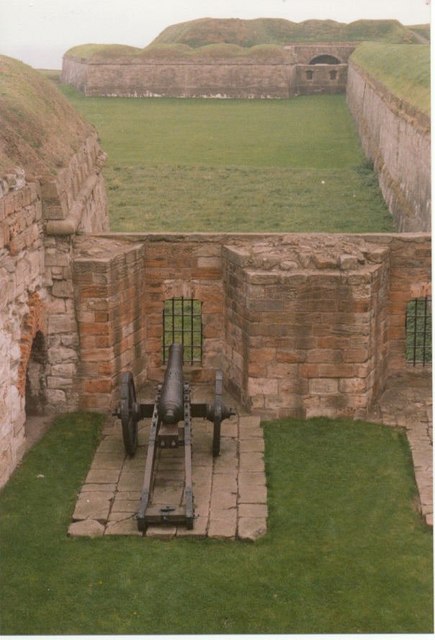
Town Walls, Berwick-upon-Tweed
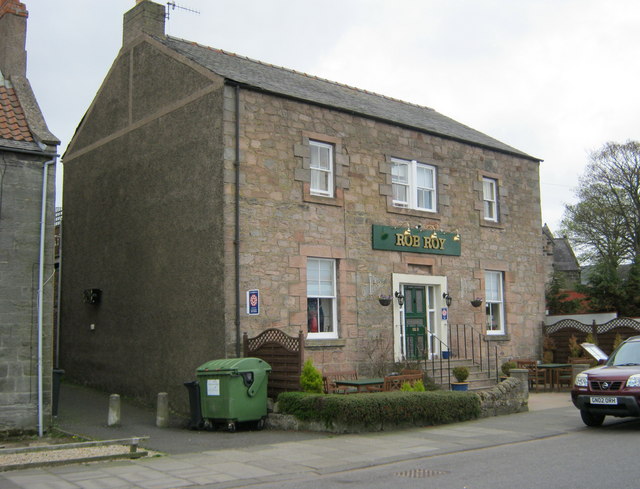
Tweedmouth
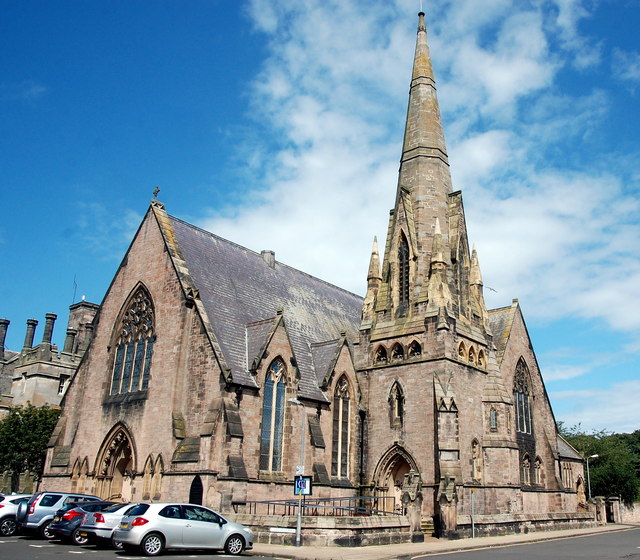
Wallace Green Church, Berwick upon Tweed




